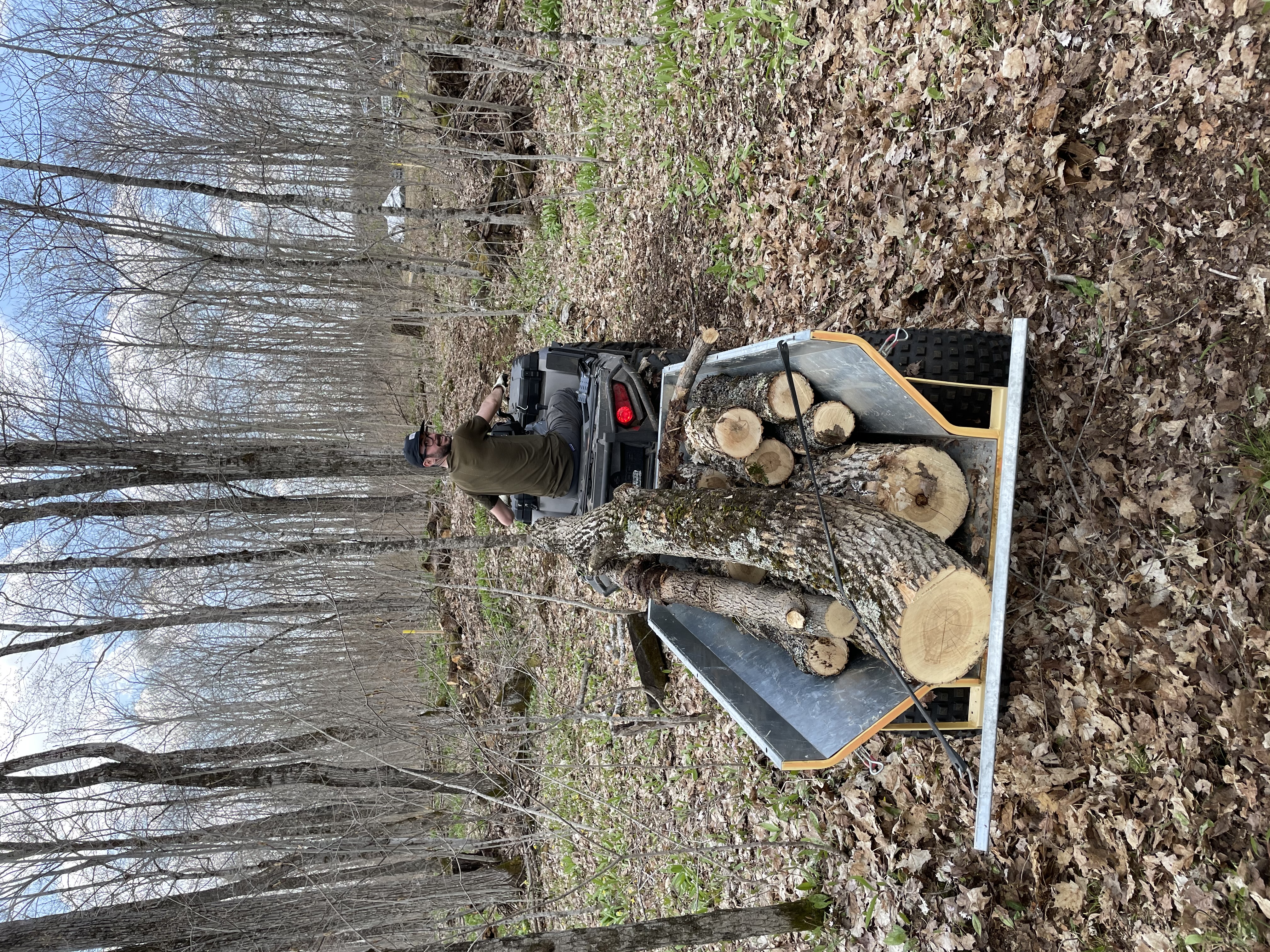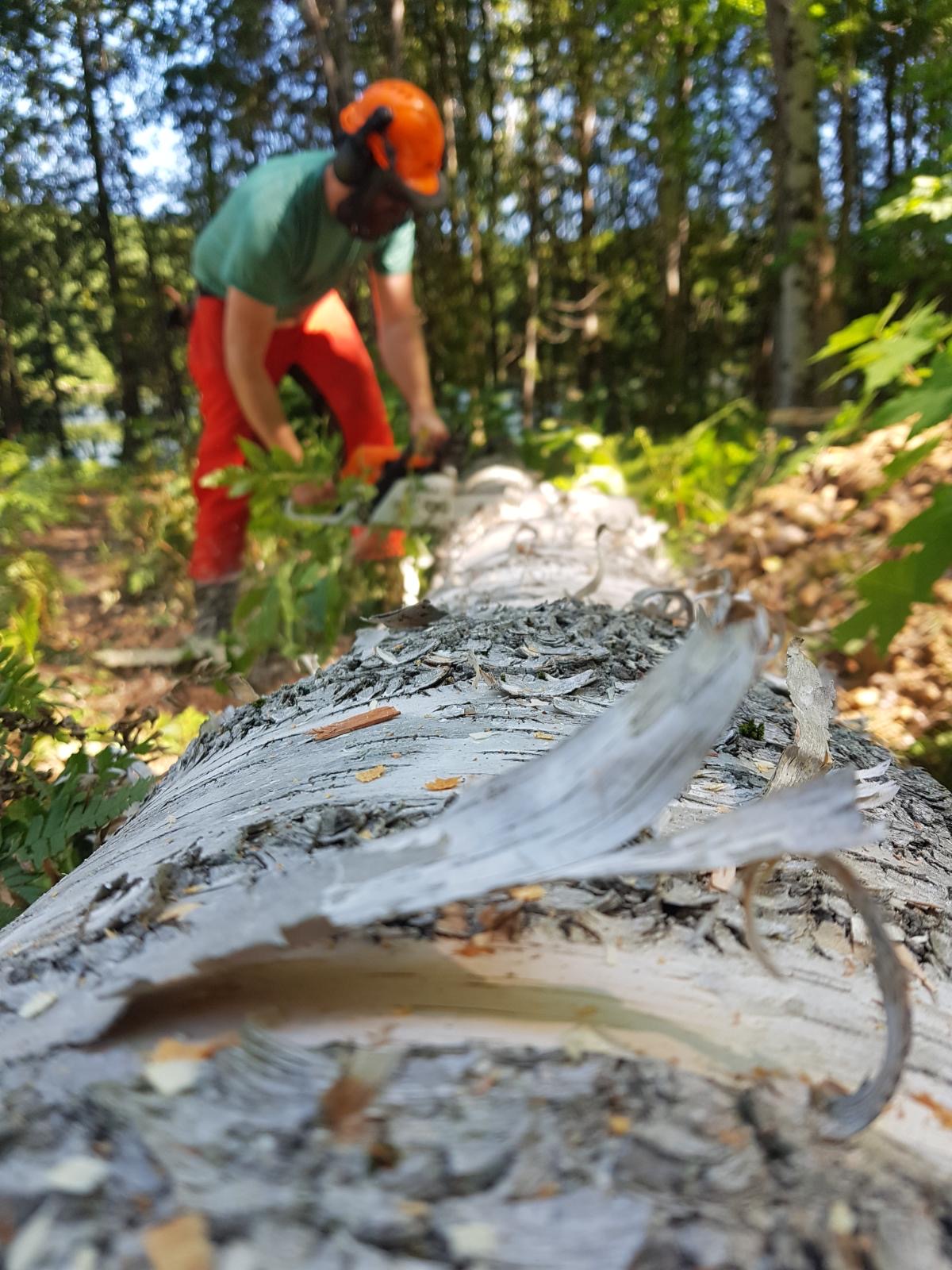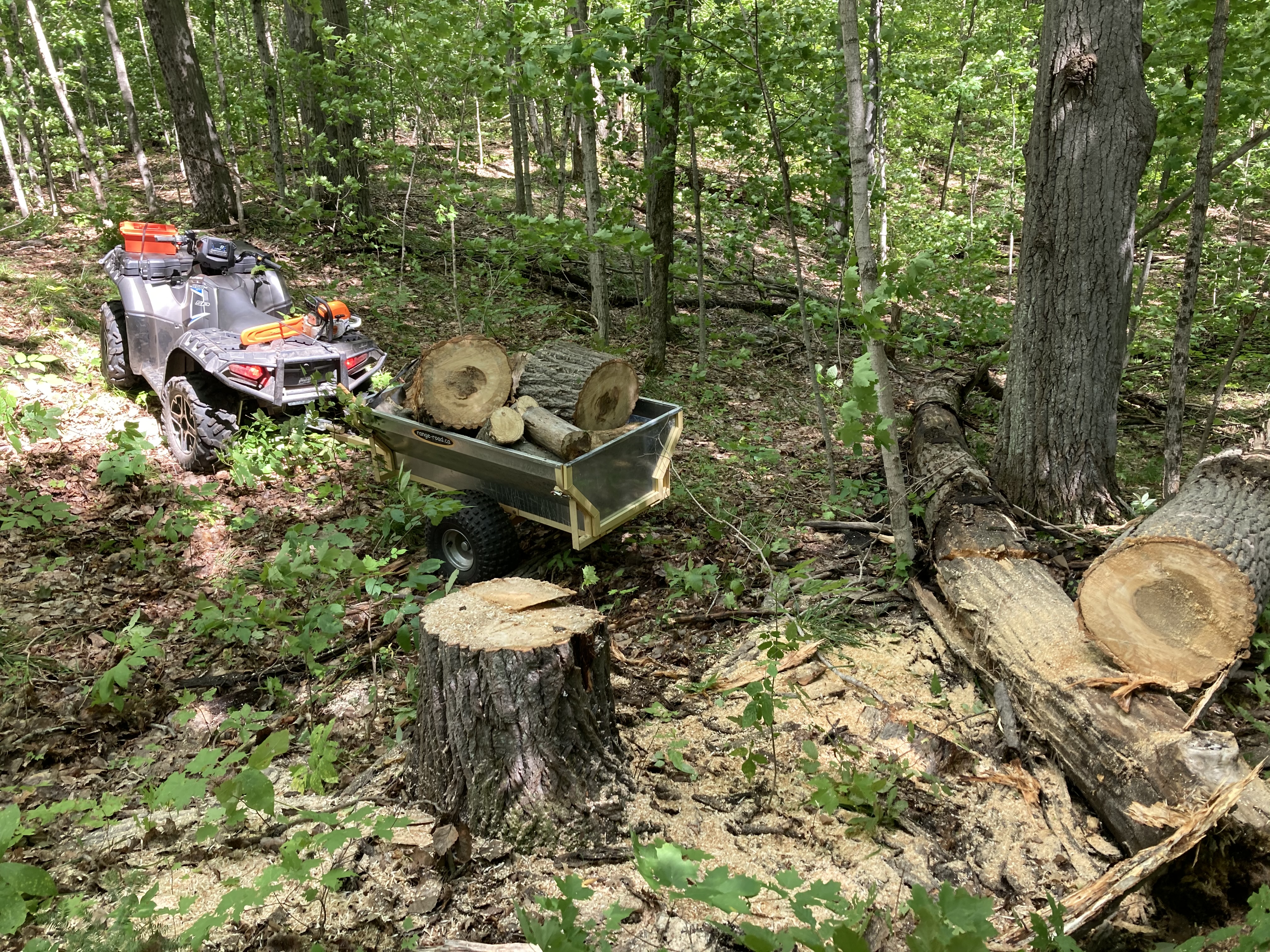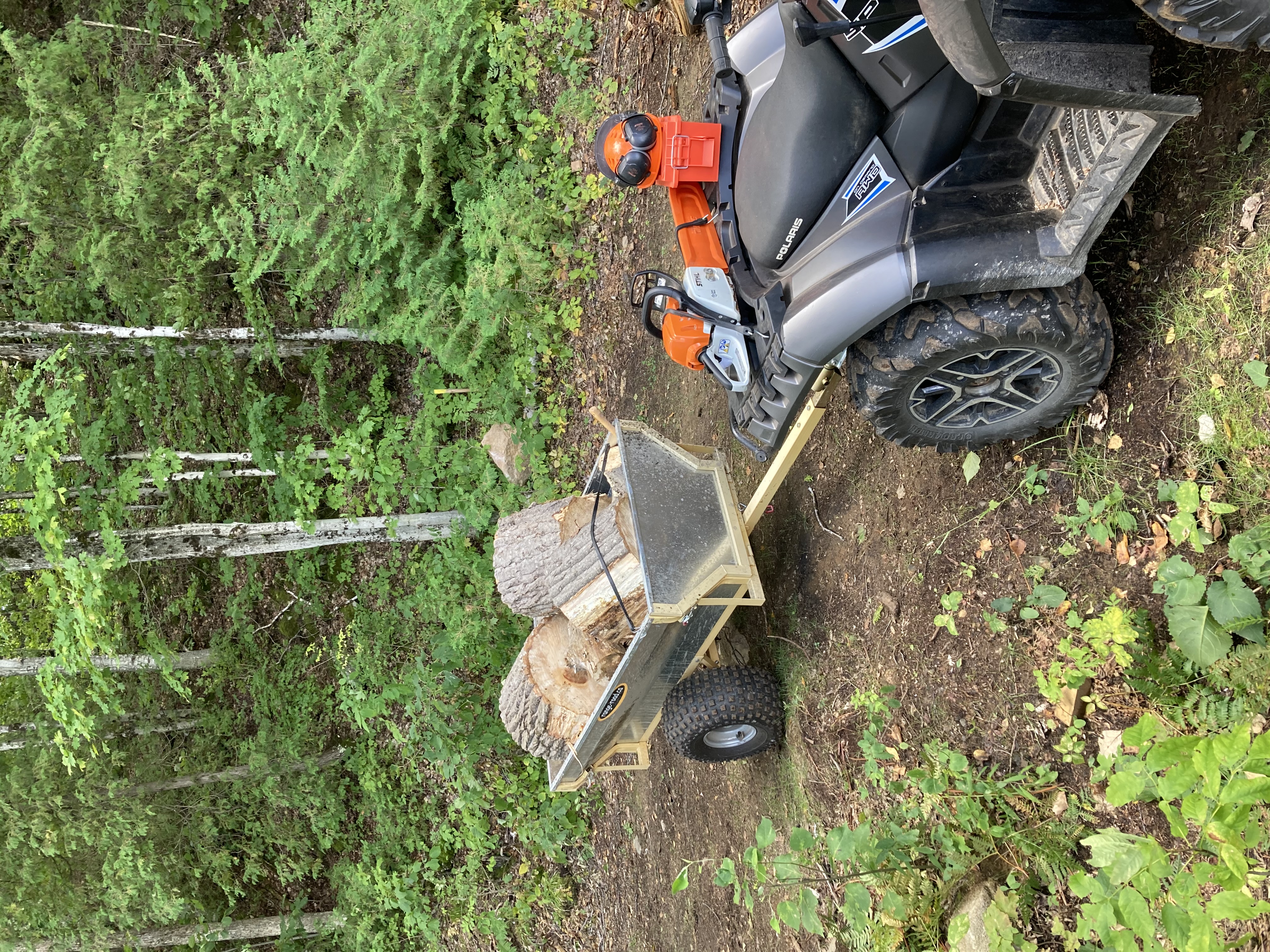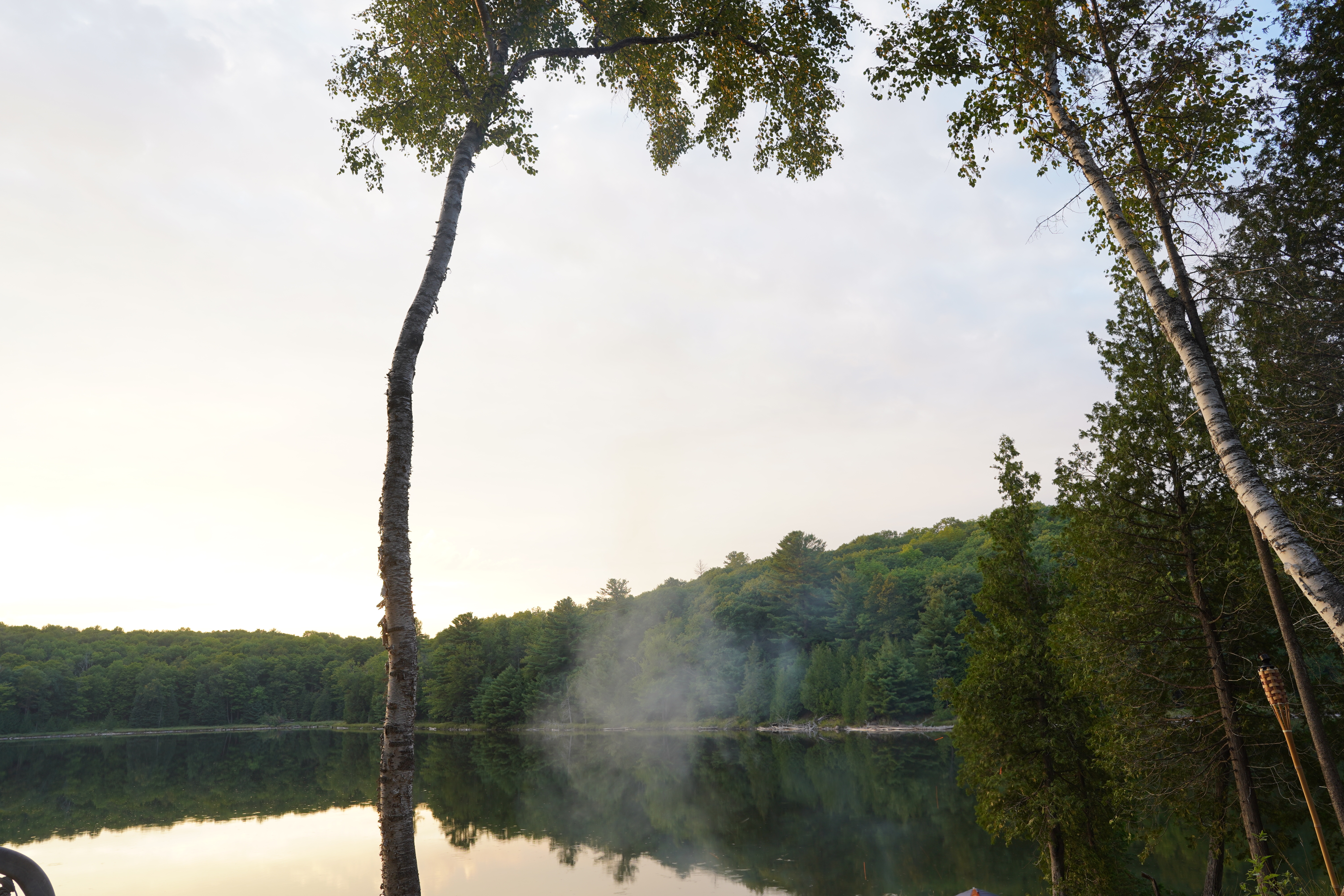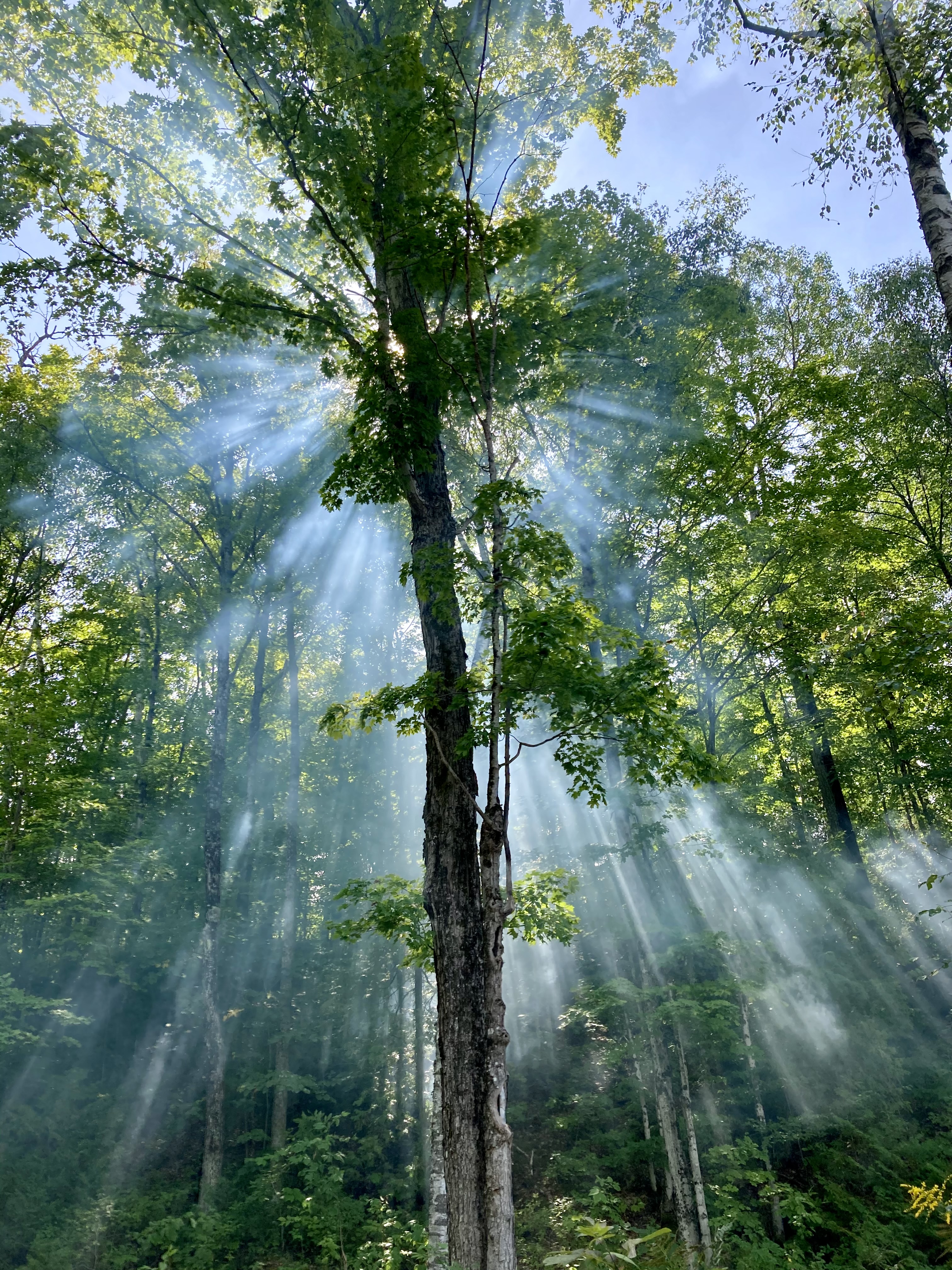The Sea Can
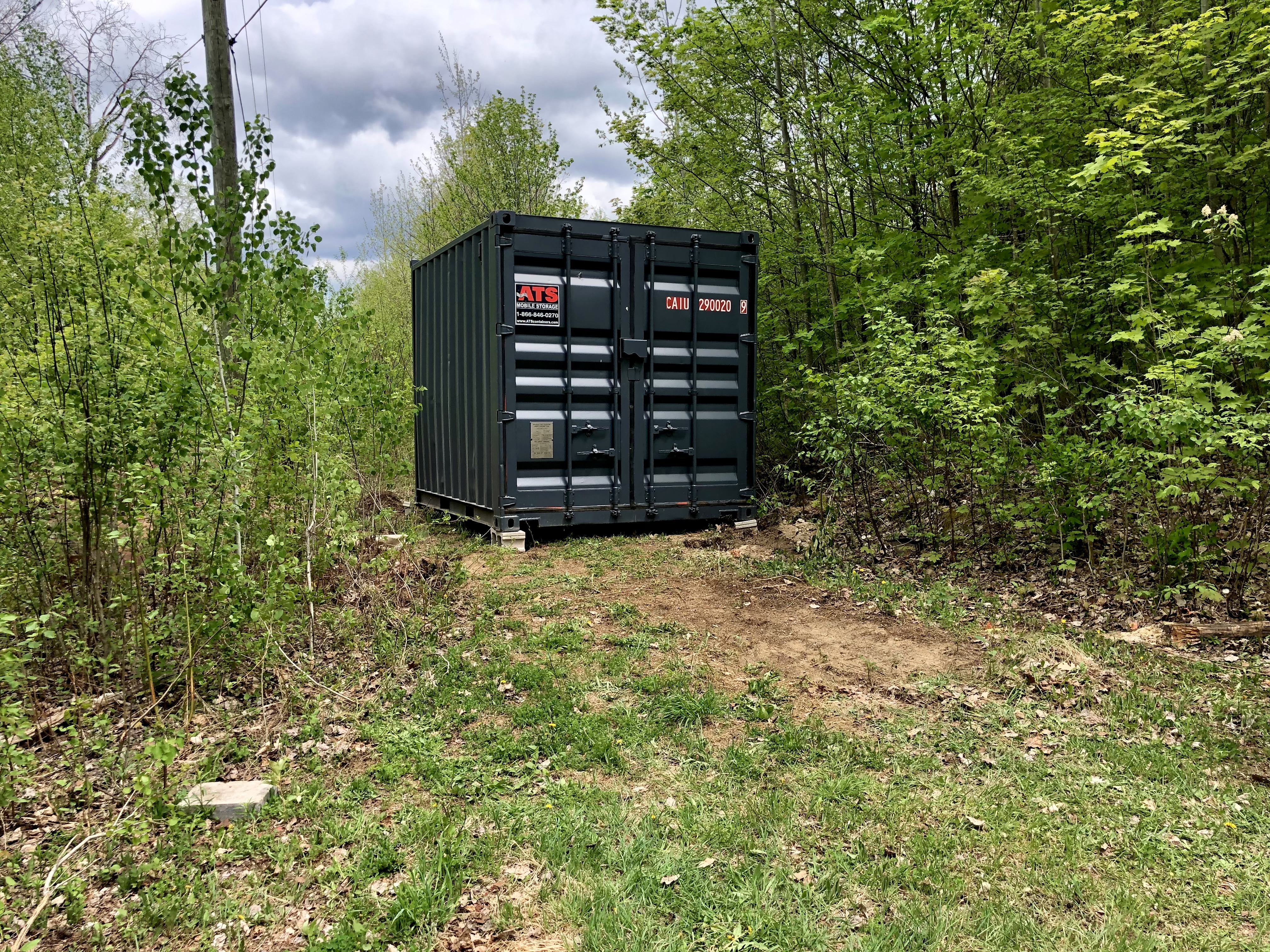
I have a garage in the city and a truck to bring things to and fro, but it gets old loading and unloading the truck, and the truck needs to be able to haul building materials in to the property. Clearly, I need storage on the property that is 1) weather tight, and 2) secure, in which to store all of the new toys this place will necessitate give me an excuse to buy.
While working out a solution, I also began to warm up to the idea of an ATV (four wheeler, quad, quad bike, probably some other names I don’t know) for the purpose of shuttling stuff up and down from the lake more easily, as well as getting to the back of the property without a twenty-plus minute hike.
Shipping Containers
I’ve never touched a shipping container (“sea can”) before, but they came to mind immediately. They come in several sizes, they’re famously water tight enough to float for a bit after they fall off ships, they’re strong (they have to be in order to be stacked several high), and they’re a commodity, meaning they cost less than it seems like they should given their size due to how common and standardized they are.
Knowing that I’ll eventually build something on this property, I made sure the shipping container wouldn’t be a problem with the municipal building department. I couldn’t find any specific mention of containers, so the only thing that seemed to apply was a maximum footprint of 108 square feet before a permit is required (a building permit is always required if the structure is any kind of dwelling, regardless of size). This meant the smallest container possible, eight by ten feet, was the answer.
At the time, containers were in the ballpark of CA$3,250-$4,500 depending on its size and some other properties. I ordered a refurbished unit (re-painted and with lock hardware installed on the door) for $3,810, delivered from a couple hours away.
I’m out of space…?
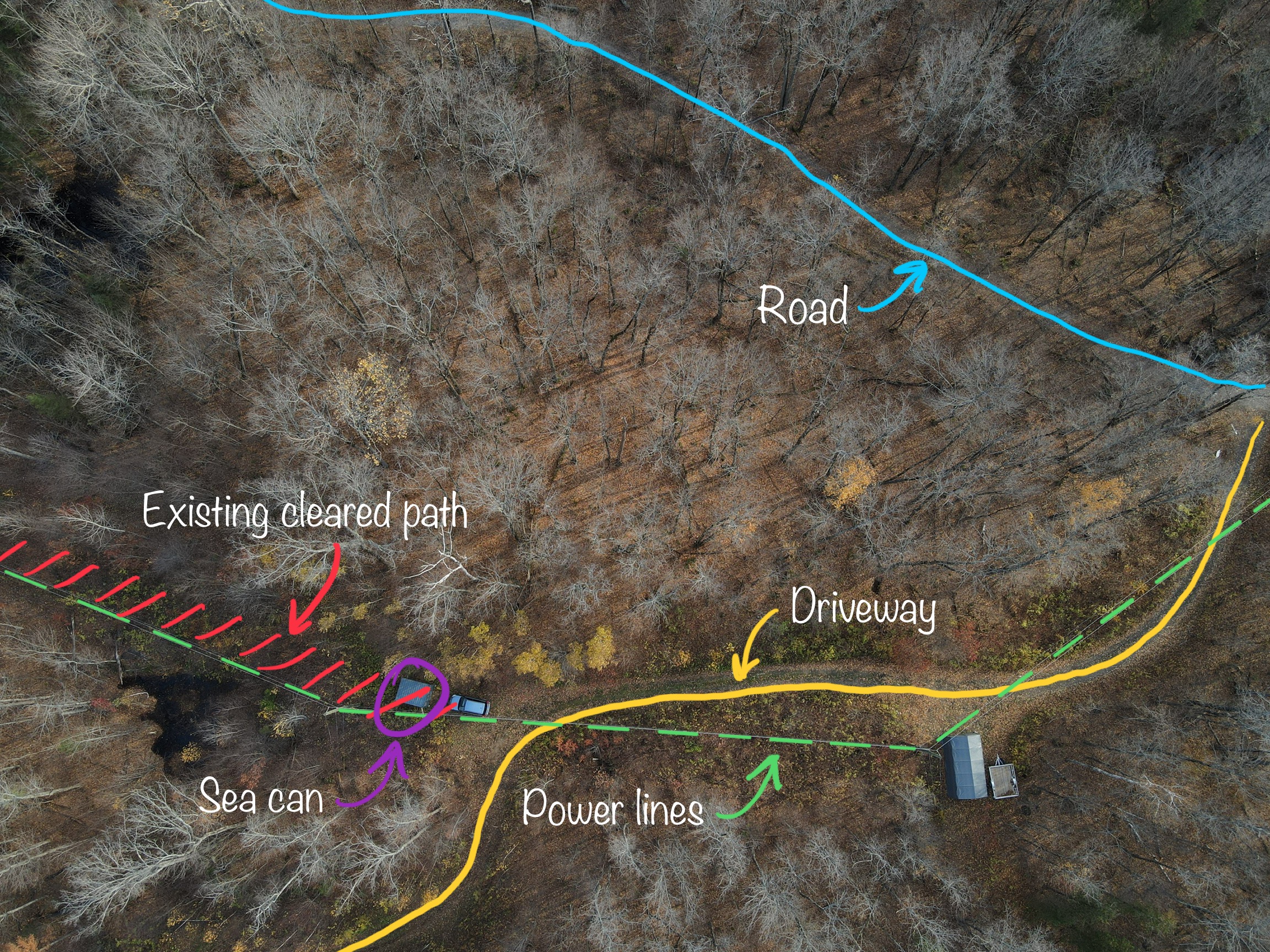
I had planned a position for the container and dug out the four corners the container would sit on, and this would be the beginning of many struggles with figuring out where to put things–a funny problem to have on 69 acres. The developer had given me a decent driveway, as well as access down to the lake, and one cleared space near the beginning of the driveway. I knew right away that the cleared space would forever be necessary for vehicles, especially trucks, to turn around in, and promised myself I’d never screw myself by putting anything too immovable there. The container also obviously wasn’t going down to the lake; that would be prohibitively challenging and result in a giant steel box on my beautiful (okay, beautification in progress) waterfront.
Power lines follow my driveway, where in the rest of the area, they follow the road. Where the driveway turns left to go down to the lake, the lines continue into the forest. They are also followed by a relatively clear path in the forest towards my neighbours, presumably so crews could install the lines and maintain them. I actually learned later that my driveway was the original path of the road, and it was moved back, further from the water, before the lots were sold off to make more room on the waterfront. This created an enticing position for the container, as it wouldn’t require any clearing and a flat bed truck could back up to it in a straight shot. I did wonder about future line maintenance, but with a lack of alternatives, I decided the container would live here. Besides, I’ve seen videos of people dragging containers around with trucks and chains, surely it would be possible to move it in the future (I was completely correct).
Delivery
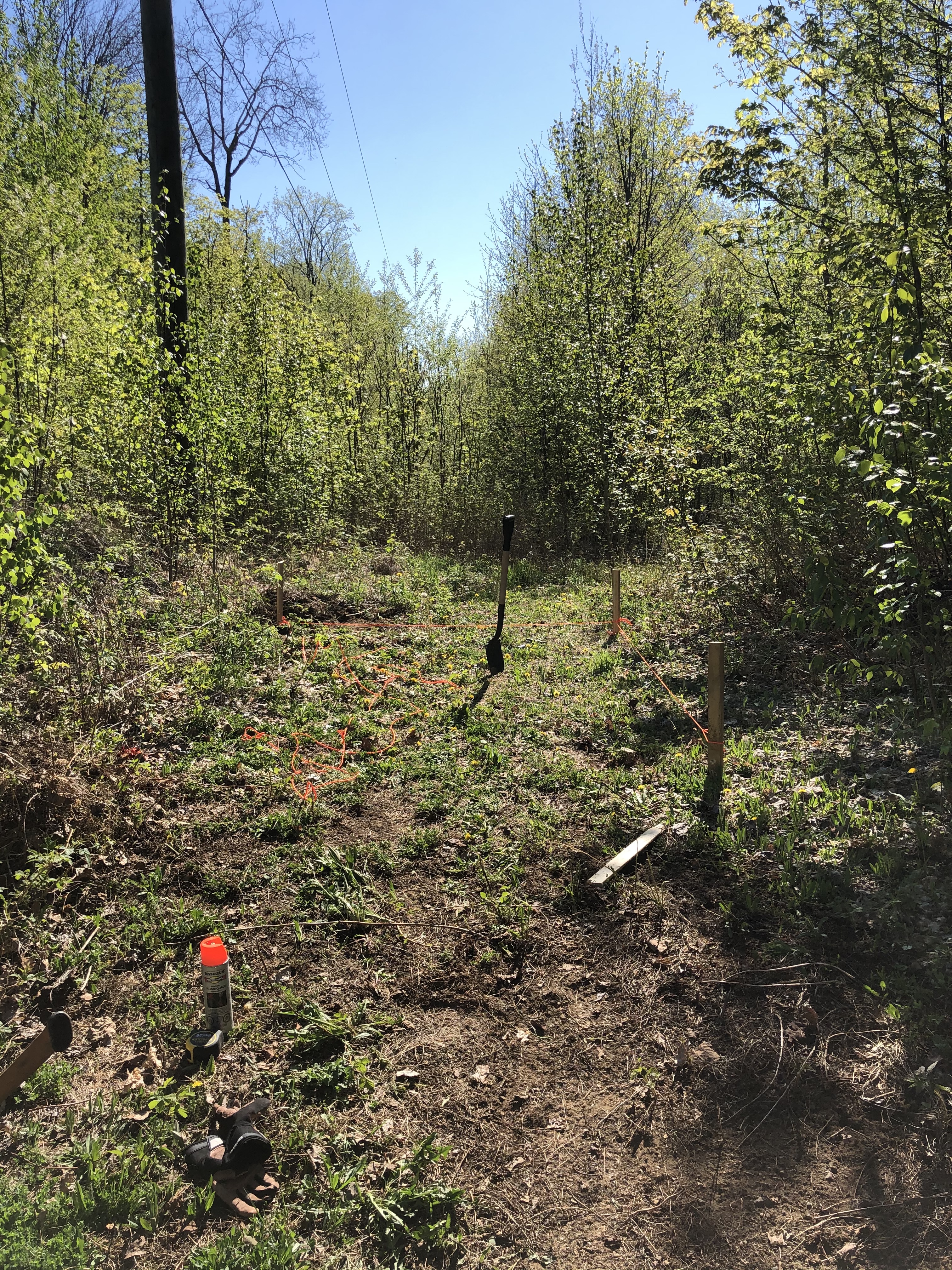
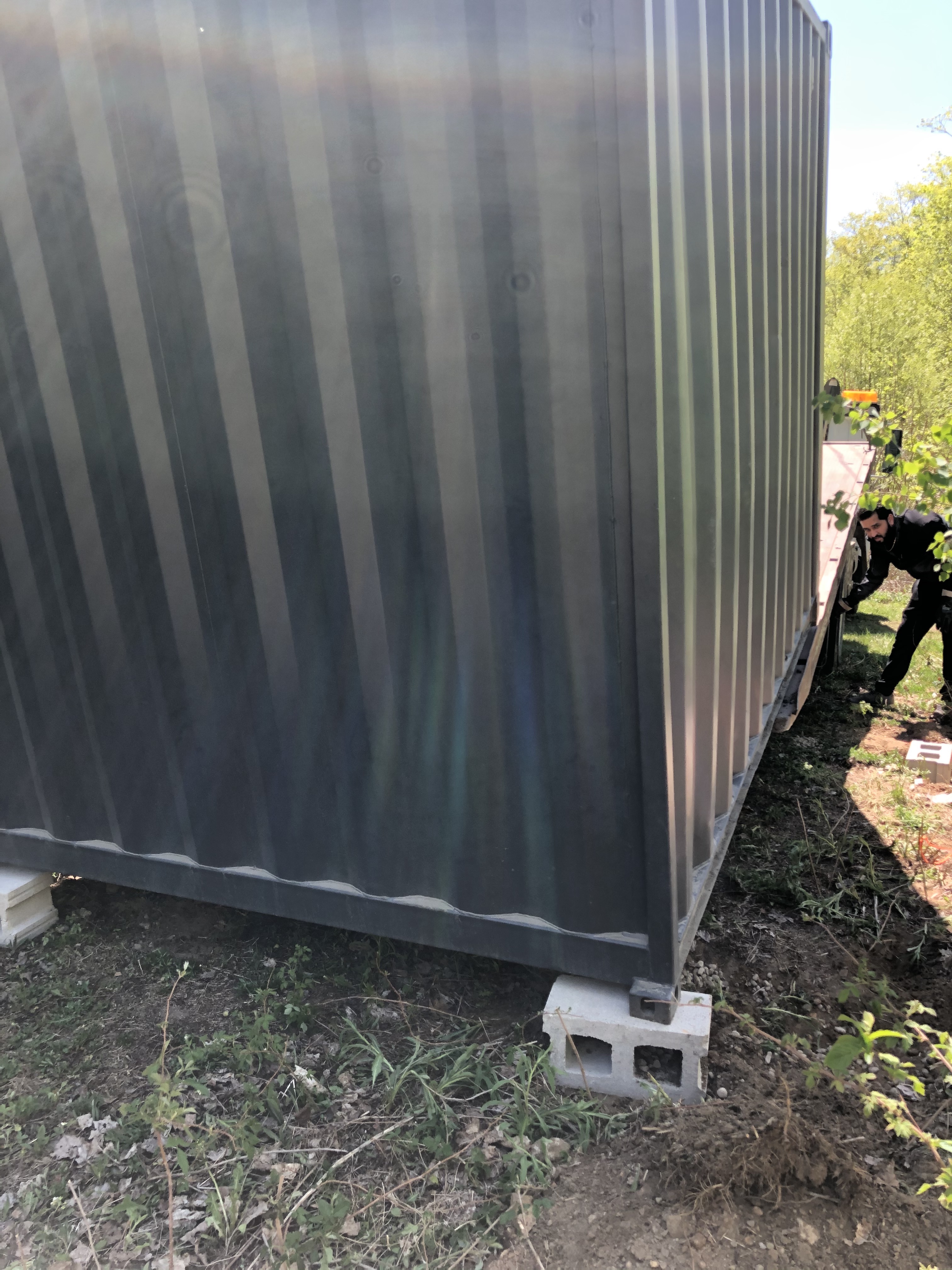
It’s time for me to learn What Other People Think of My Road. A few issues.
- I don‘t have a street address, or what‘s sometimes called a 911 address out here yet, so it‘s down to written or verbal directions. Some people are good with this, some people have no idea how to judge distance or, apparently, signage.
- I‘m down a couple kilometres of completely reasonable, municipally maintained cottage road, but then down another kilometre and a bit of private, owner-maintained road that is much narrower, hillier, windier, rougher, and, listen, it’s not the best, okay?
- I‘m not a truck driver, so I don‘t know what can and can‘t fit down my road, and if something gets stuck, it’s very unlikely anybody else can get in/out.
This driver in particular called me when they were half way down the private road, audibly spooked, and I drove out to meet and coach them. Realistically, they were fine, but I empathize; they haven’t seen that there is definitely a turn around space and that the road does not get significantly worse.
I had put some gravel and a cinderblock on each corner. I assumed that a steel (or “COR-TEN,” a corrosion-resistant high tensile strength alloy used for containers to prevent rust in a salt water environment) container would be best kept off the wet ground. I then learned, when the truck arrived, that a flat bed truck is not accurate enough to drop a container precisely on four blocks. I quickly gave up on my masterful foundation and threw the blocks wherever the container was going, and the impact of the container ended up shattering a couple of them. I have no reasonable way of remedying this, so onwards we go.
My takeaway from the delivery was that I know for certain that a 27-foot flat bed shouldn’t have any trouble on my road; I’d use this as an important point of reference going forward. This would not prevent me from finding out first-hand what does not fit down my road. Sigh.
Room for Toys

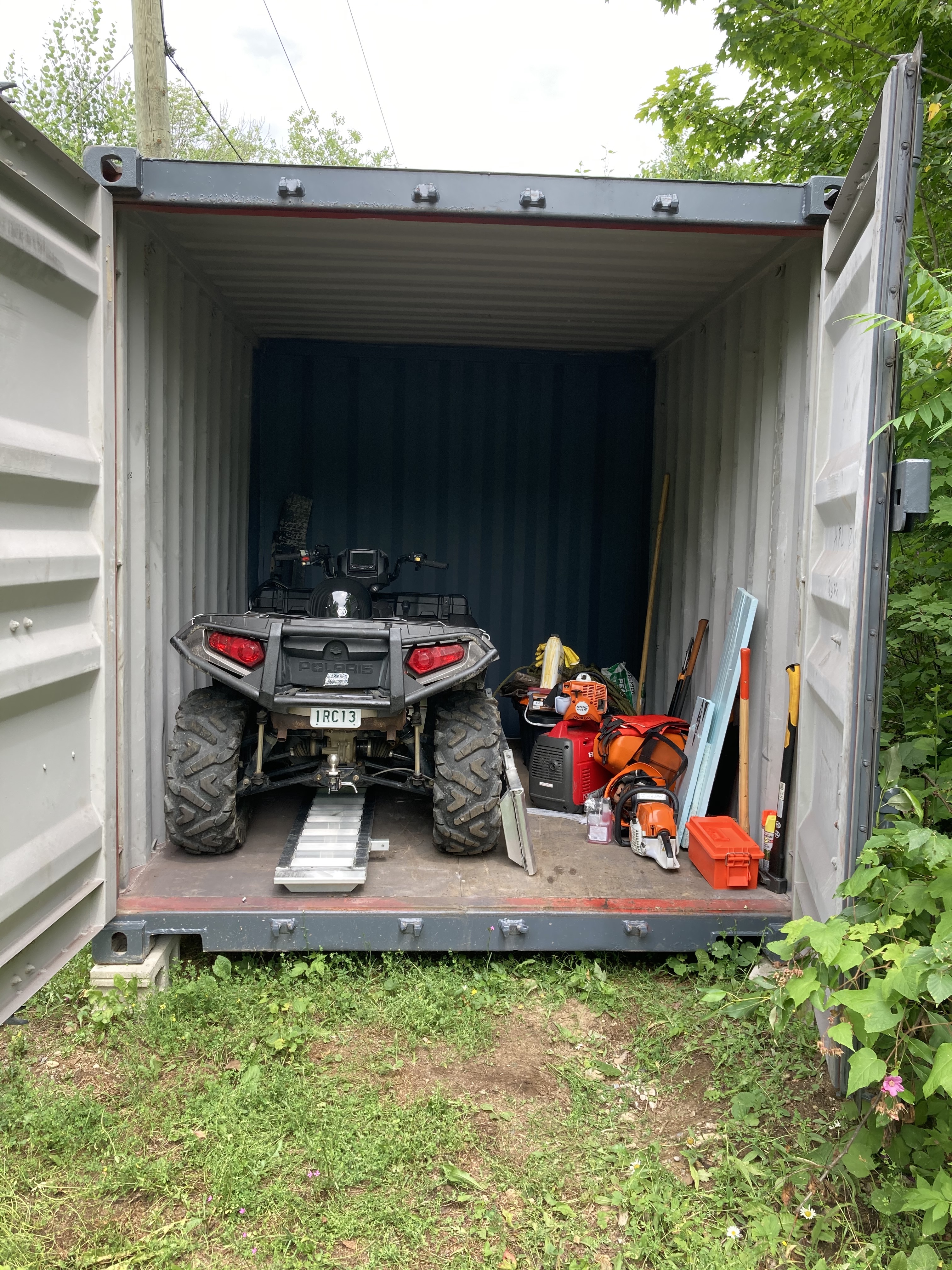
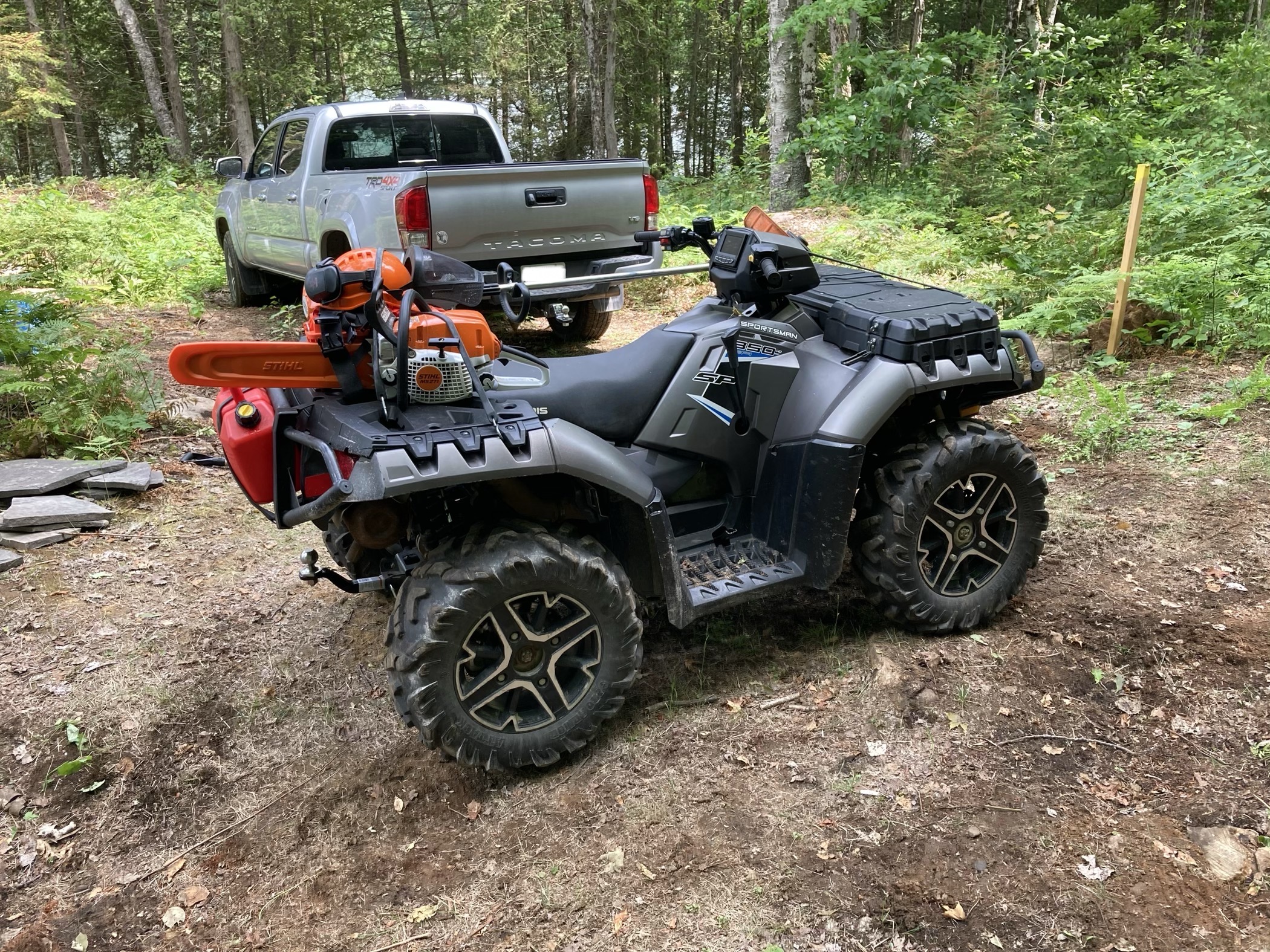
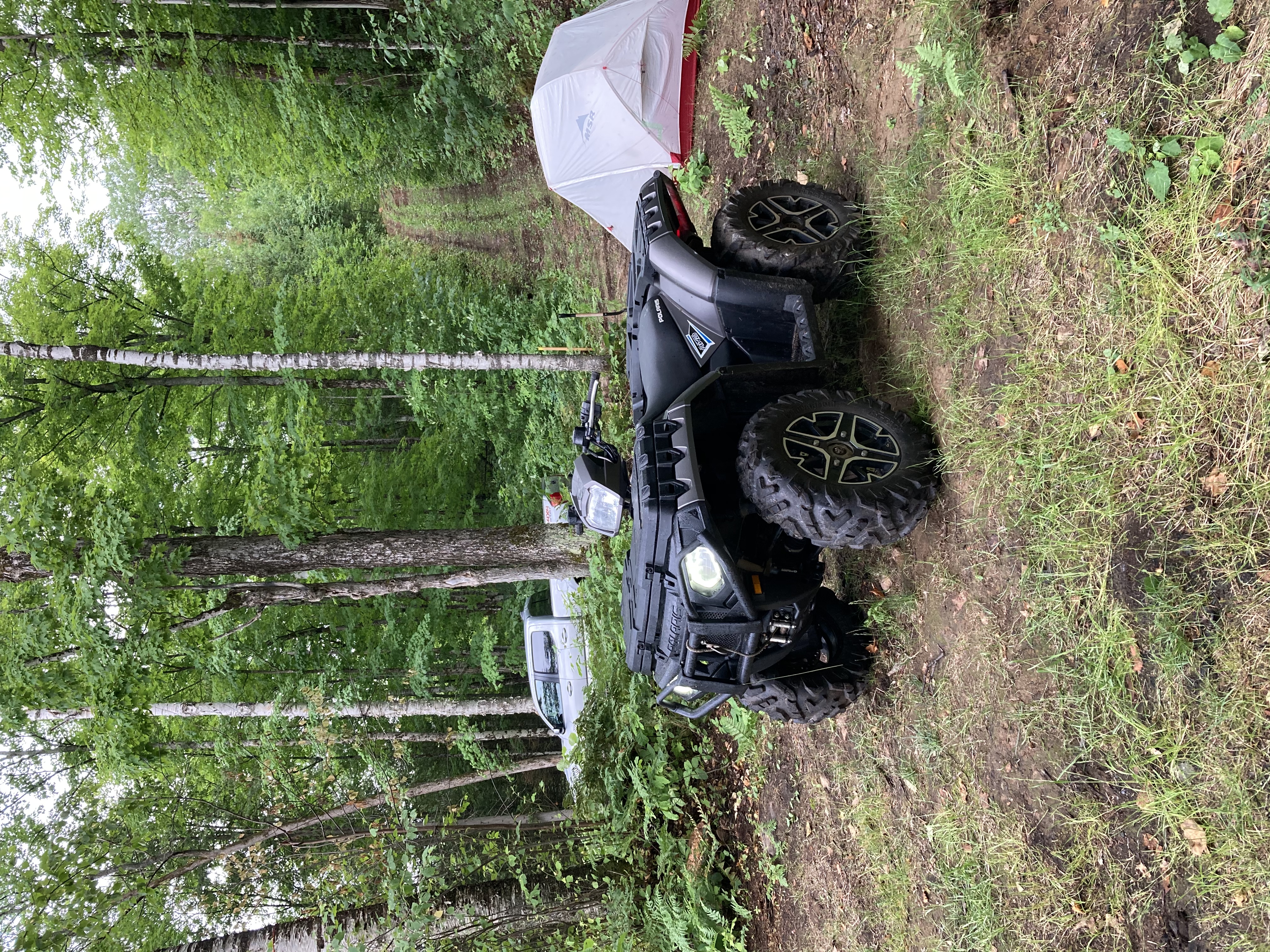
I genuinely don’t think the idea of an ATV entered my mind until the sea can was in place. As this is early summer 2020, it’s close to impossible to shop for anything. Additionally, though I was ahead of everyone on getting land, I was behind the curve on Country Toys. My requirements for an ATV were:
- is ATV shaped
- works
Really, I don’t know anything. I do generally buy things used, however, a market that had been thoroughly picked over in the spring. I found a 2016 Polaris Sportsman 850SP EPS an hour away at a dealer and made the deal. It’s funny to evaluate something you don’t understand; my “test ride” was more of a “what is an ATV” crash course. Anyway, that model name means:
- 850cc displacement. This is the physical size of the engine, and this number is high for a machine this size. I wasn’t looking for this. There are small European cars with smaller engines. This means only the first 30% of the throttle is useful and lively, and the rest simply launches you into low earth orbit, where there is no oxygen and you die. At least part of that is correct.
- SP probably stands for SPecial. I don’t know.
- EPS: Electric power steering. I didn’t really know this at the time, but EPS is not common on these machines. Unfortunately, I’d learn later why adding a bunch of not-strictly-necessary electrical features to machines that are meant to live in the mud and the rain isn’t great for longevity.
The wrong trailer
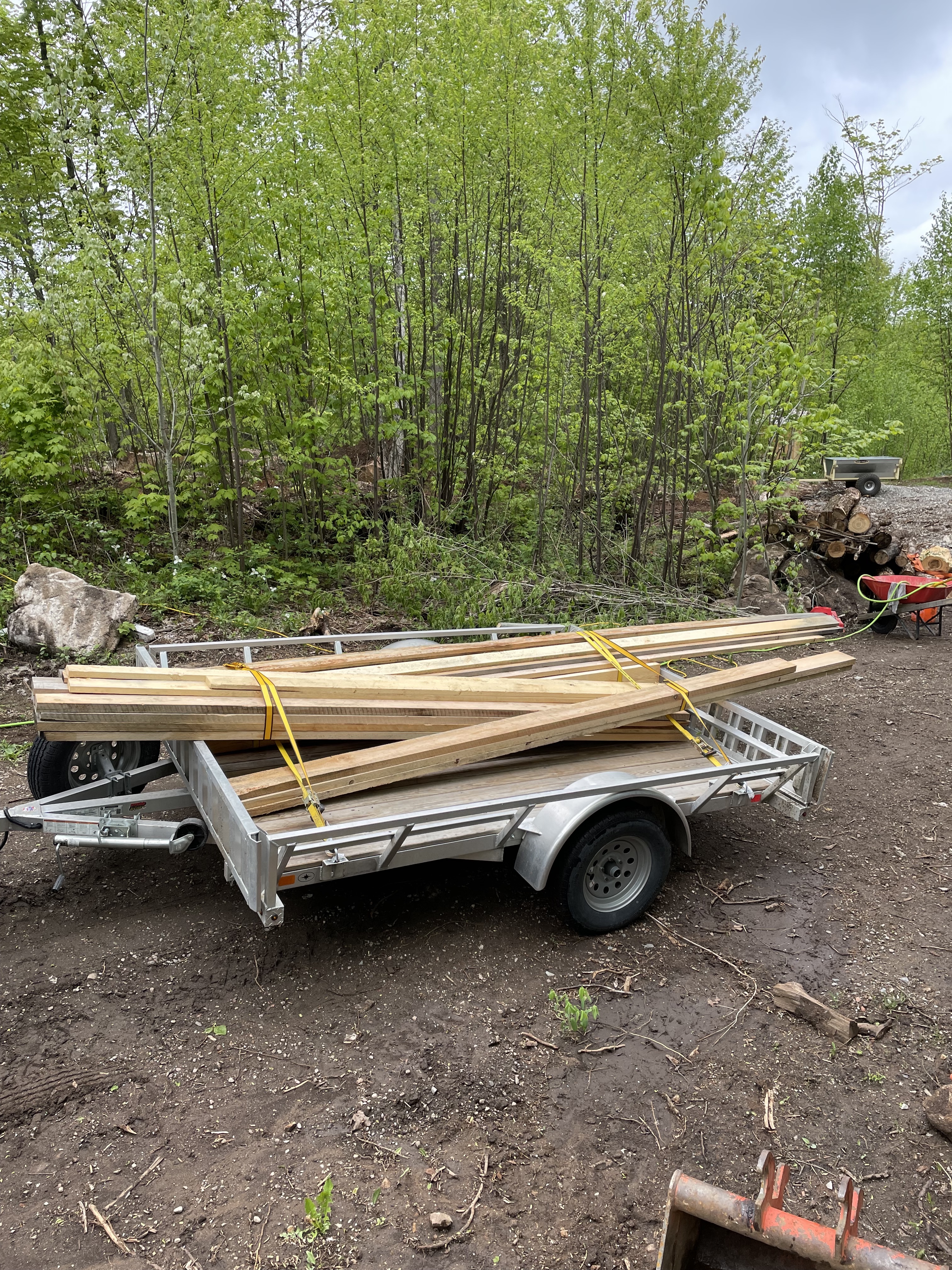
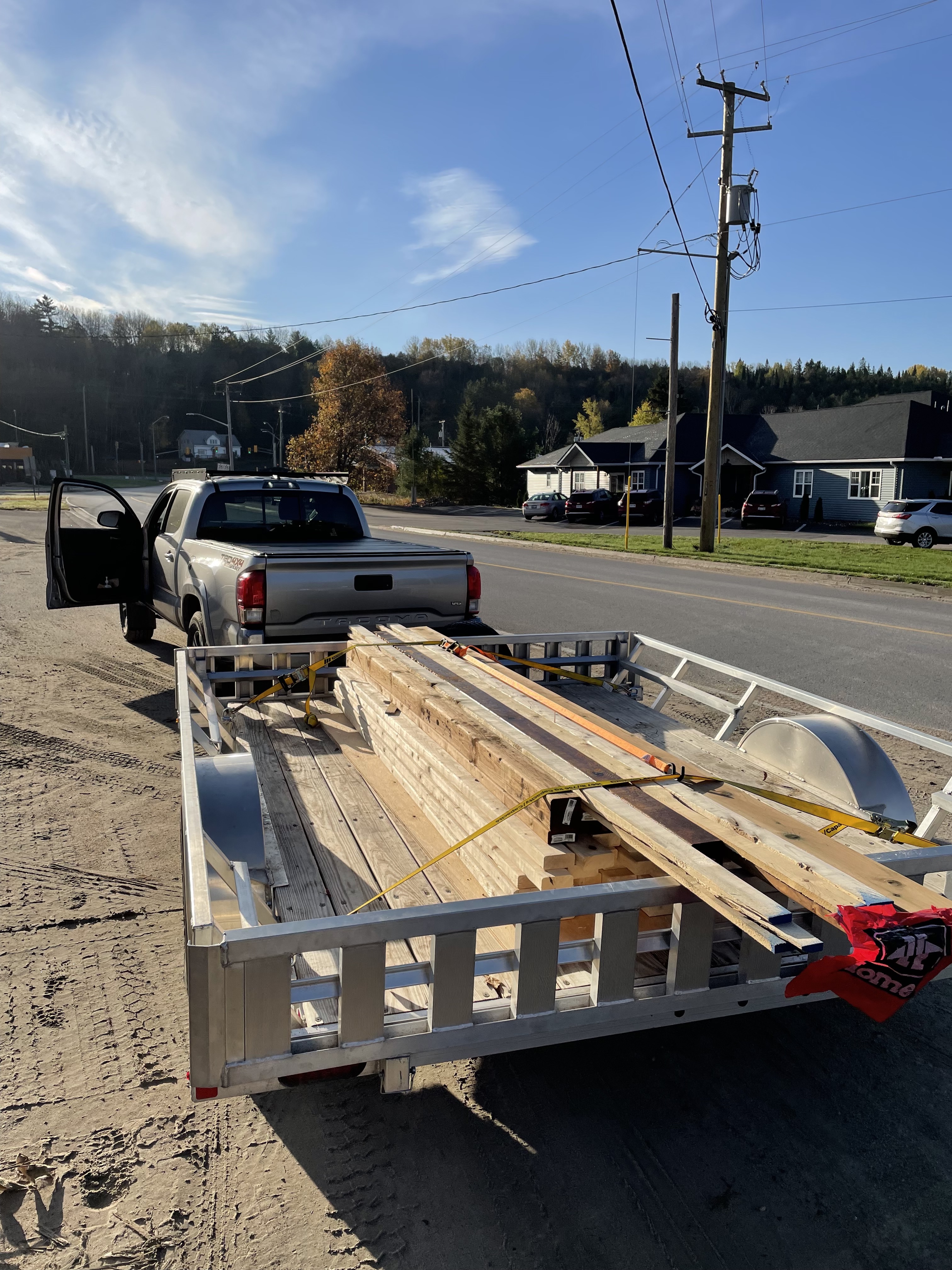
The other part of this deal was a trailer to bring the machine home on. I really didn’t think this through, and should have paid to have it delivered, as I didn’t know what else I would use a trailer for and the selection was limited. I knew I wouldn’t be trailering the ATV around much, if at all (this won’t ever become much of a hobby for me, it’s a means of transport on rougher terrain). I took the ATV home on a Polaris branded single-axel aluminum trailer. Aluminum is a premium, but is much lighter than steel and doesn’t rust after a few years. Did I mention there was limited stock and this was pretty much all they had?
It would only have made sense to get a more cargo-oriented trailer, but I had no way of knowing that would ever be a need, or what the right trailer would look like. I think these two photos do a decent job illustrating how this trailer was poorly suited to any future hauling. Besides what is pictured (trailer’s too little), it also has a lower weight capacity than the truck can handle, and the single axel means that any pothole is an event, bouncing that side of the trailer into the air. Things to address in the future.
The right trailer
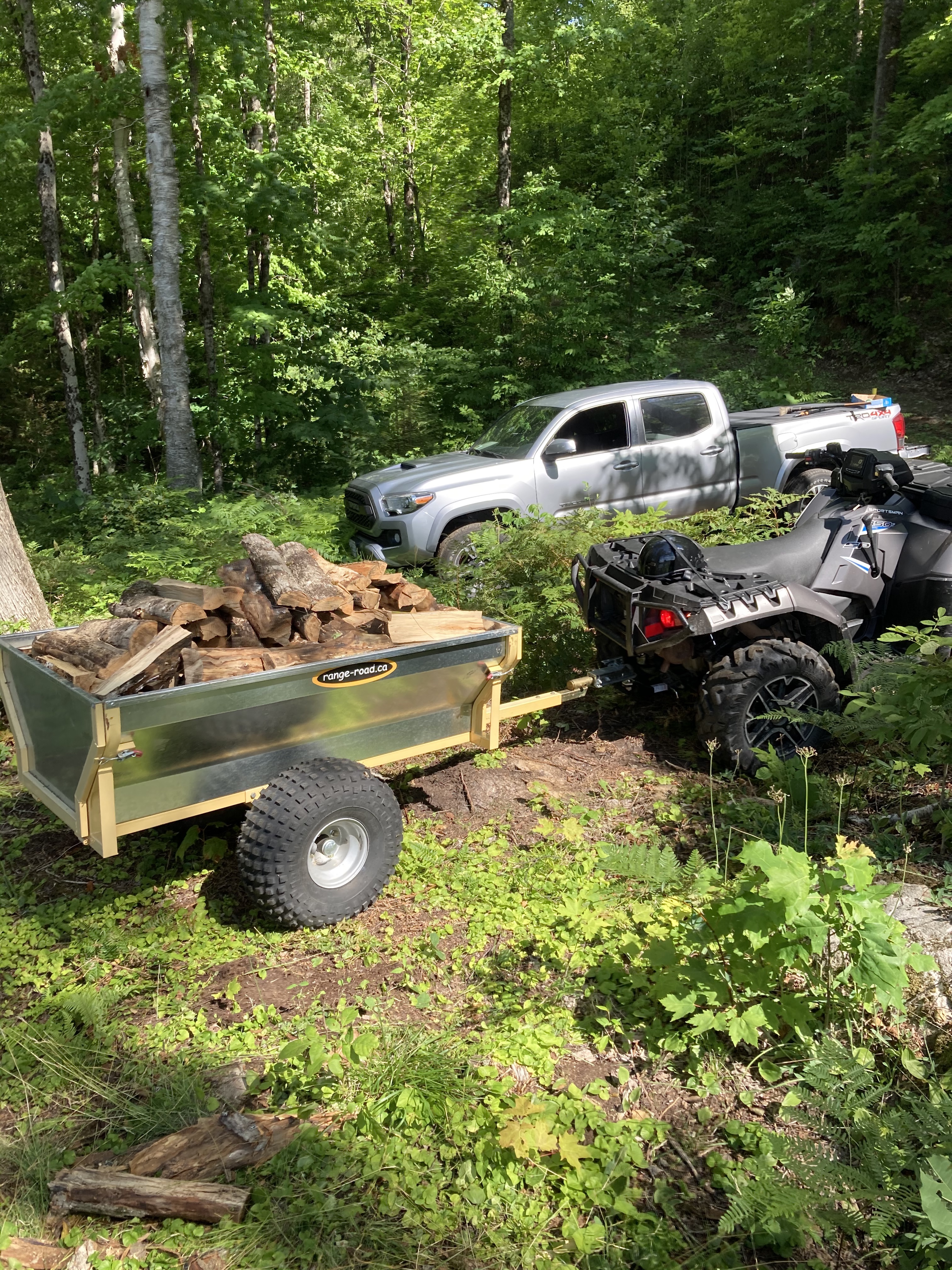
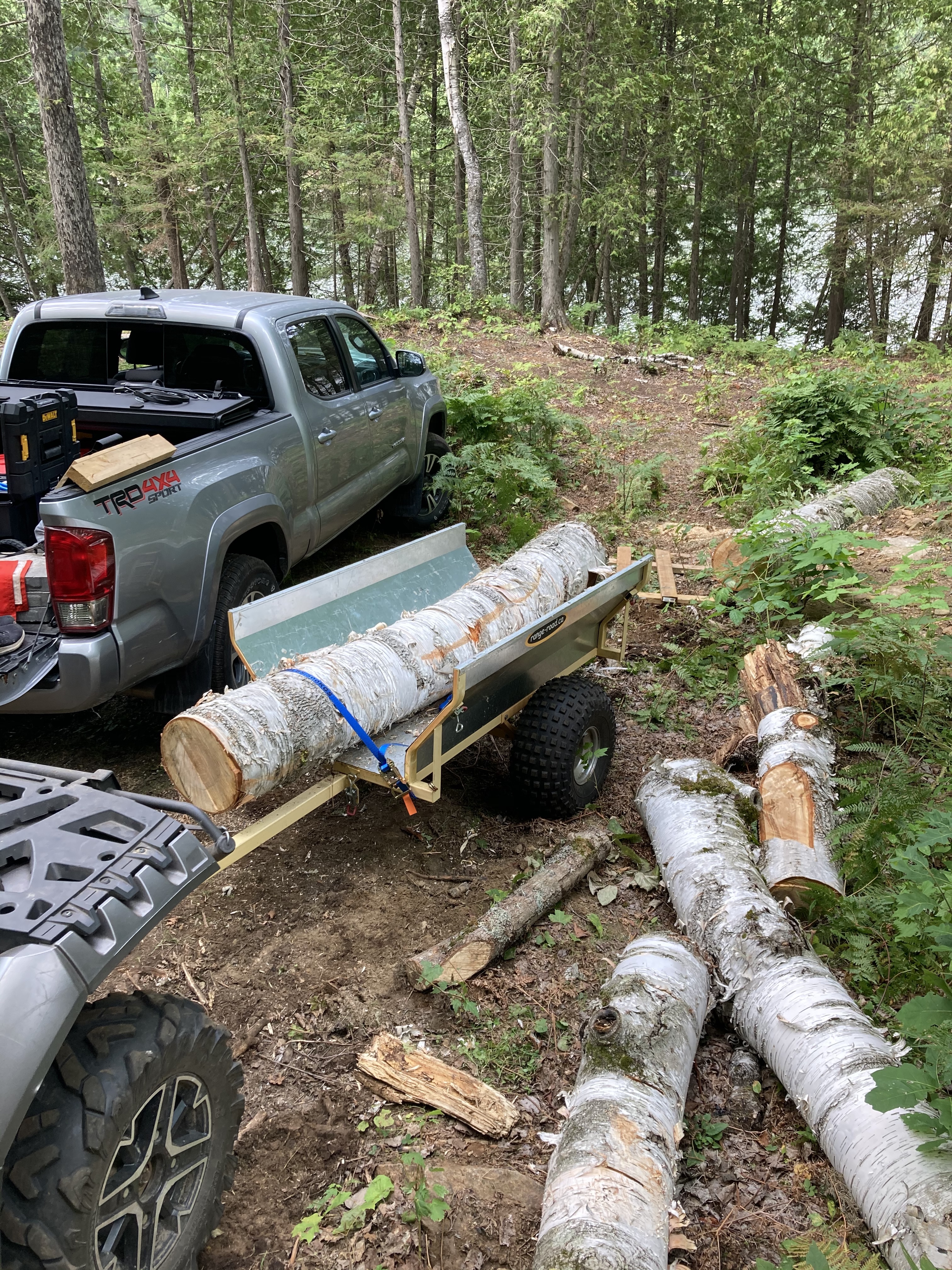
No, I didn’t immediately trade in the ATV trailer. To complete the ATV, I purchased a trailer for it. I mean… for it to tow. Yikes, let’s just assume I’m talking about the latter from now on.
I found this Range Road trailer on clearance, its yellow paint was UV faded and… that’s all. Buying “used” is great. The steel panels are all galvanized, the front and rear panels are easily removable, and the bed can be released to manually pivot up and dump its load. Similar to the other trailer, one thing I’d change is getting a tandem axel (two axels rather than one, four wheels total) to better handle particularly rough terrain, but it’s no trouble unless one was to haul a person or two. Hypothetically.
For what it’s worth, Range Road gets a rare okie dokie from me. I also have a theory; this company’s logo is in no-shit Comic Sans, and the products are both high quality and relatively affordable. Less money spent on looking like a real grown-up company, more on developing good products at reasonable price points. There seems to be an inverse relationship between brand design prowess/marketing and product quality. I will stand by this until it bites me.
More photos

